|
| | The Devil Wears A White Dress: Antoinette et la chemise |  |
|
+14Colibri Greta de Fleurville globule Dame d'atours Rose Rose Airin Chakton Little Po decadenzia le beau lauzun Chou d'amour madame antoine levengeur pimprenelle 18 participants | |
| Auteur | Message |
|---|
pimprenelle

Nombre de messages : 40594
Date d'inscription : 23/05/2007
 |  Sujet: The Devil Wears A White Dress: Antoinette et la chemise Sujet: The Devil Wears A White Dress: Antoinette et la chemise  Mer 2 Avr - 9:25 Mer 2 Avr - 9:25 | |
| The Devil Wears A White Dress - Marie-Antoinette and the chemise a la reine
The Devil Wears A White Dress
In 2012, I began researching the chemise à la reine (a.k.a. chemise gown) in fulfillment of my Master’s degree in Art History. My interest in the chemise gown centers on its sudden appearance in the early 1780s, its difference from conventional European clothing of the elite during the latter quarter of the eighteenth century, and the scandal that the chemise gown generated with its attachment to Queen Marie-Antoinette.
It quickly became apparent that the body of research available on this garment is lacking in three significant areas:
A thorough exploration of the origin of the gown (my research has indicated a different origin than the one most commonly proposed by costume historians);
A complete study of an extant chemise à la reine;
An in-depth analysis of socio-cultural reactions to the chemise gown within the context of the late-eighteenth century.
To date, I am aware of no publication that has tied together these three important aspects of the chemise à la reine, and I realized the significance of my research would be increased if I were to be able to study an extant chemise gown. The only extant 1780s chemise gown was in the collection of the Manchester Art Gallery at Platt Hall, in Manchester, England. At least one other chemise gown exists in a collection in France, but it dates to the 1790s, and is less historically significant to my research, which explores the origin of the gown, as opposed to its subsequent wide-spread [SG1] adoption post-1789. I approached Dr. Miles Lambert, Head Curator of the costume collection at Manchester Art Gallery in the summer of 2012, with the aim of studying the chemise gown. He accepted, and in October 2012, I traveled to Manchester, England to view the chemise gown.
While the study trip was ultimately successful in helping me to complete my Master’s thesis, one key question remained: Construction technique. The chemise gown was at that time on permanent display at Platt Hall and could not be deinstalled for the purpose of my study. I kept in contact with Dr. Lambert in hopes that the chemise gown was to be taken off display so I could arrange another trip to examine the gown off the mannequin.
In early January 2014, I contacted Dr. Lambert about making a second study appointment for 2014, and he informed me that the chemise gown would be made available to me for study, out of the display case.
The rare opportunity to take detailed measurements and examine construction technique is critical. To date, the only pattern of a chemise à la reine, taken from the chemise gown at Platt Hall, was done by Nora Waugh and included in The Cut of Women's Clothes: 1600-1930, published in 1968. Waugh’s pattern is more of a rough sketch and lacks detailed information, particularly seam lines and construction information. My intent would be to reproduce an accurate pattern based on the Platt Hall chemise gown to accompany a future publication in Dress based on my thesis work done to date.
Two years later, I need to get back to Manchester to conduct further study, in order to finish my thesis and publish my research.
What I Need
Indiegogo Fundraising Projected Amount - $2000
Airfare from San Francisco, CA to London, UK - $1200
Transportation from London to Manchester - $100
Remainder to be applied to Food, Lodging &Transportation - $700
What You Get
What's in it for you? Well, at the very least you will receive the following if you support my campaign:
My eternal gratitude
Never-before published research on the history, and chemise gown
The opportunity to crowd fund important research!
Other Ways You Can Help
Some people just can’t contribute, but that doesn’t mean you can’t help:
Spread the word on Social Media!
https://www.indiegogo.com/projects/the-devil-wears-a-white-dress-marie-antoinette-and-the-chemise-a-la-reine
Thanks for the information. And... we hope you'll get it!
Best regards,
pim
_________________
rien que la mort peut me faire cesser de vous aimer
|
|   | | pimprenelle

Nombre de messages : 40594
Date d'inscription : 23/05/2007
 |  Sujet: Re: The Devil Wears A White Dress: Antoinette et la chemise Sujet: Re: The Devil Wears A White Dress: Antoinette et la chemise  Mer 2 Avr - 9:52 Mer 2 Avr - 9:52 | |
| Mais, c'est vrai, ça, après tout... What is a chemise à la reine, anyway?
Posted on April 1, 2014 by SarahRest assured, the chemise à la reine is never far from my mind. I’m finishing up the second draft of my thesis, so there’s that. But there’s also the fact that I’m going back to Manchester in May to have a second study date with the Platt Hall chemise gown, in preparation for a detailed article I intend to write in the next year. And, of course, Costume College: My class on the chemise à la reine was accepted, so put that down on your schedule!
With all this swirling around in my brain, I think it’s high time I talked about what I consider a chemise gown. For the purposes of my research, I pulled together from both written and visual sources in French and English, a timeline of the chemise à la reine and its offshoots, between 1780 and 1793-ish. These dozen or so years are divided into two parts: 1780-1786 and post-1786. My thesis is focused on the first 6 years of chemise, and not so much the last 6 years, mainly because I’m trying to answer the question of just where the heck this style came from (hint: I have a theory, but I’m not going to go into it here quite yet).
There’s a source from Elisabeth Vigée-Lebrun’s memoire that alludes to Marie-Antoinette having worn a white muslin gown amongst her intimate friends, while at Marly, in the mid-1770s, but the verbal description is vague and Vigée-Lebrun was writing about it decades after the encounter. The style doesn’t enter the fashionable consciousness until the early 1780s, however, when Vigee-Lebrun’s portraits of the Madame du Barry, the Comtesse de Moreton, and of course, Marie-Antoinette, crop up in short succession. Elisabeth Vigée-Lebrun, Madame du Barry, 1781. Elisabeth Vigée-Lebrun, La Comtesse de Moreton, 1782. Elisabeth Vigée-Lebrun, Marie-Antoinette en chemise, 1783. Those of you paying attention to the dates of the images above will note that the earliest portrait of the chemise gown is that of du Barry in 1781, followed by the comtesse Moreton in 1782, and finally, in 1783, Marie-Antoinette’s notorious portrait. There’s no question in written accounts that the queen was recognized as an early-adopted of the dress, but she held off having herself painted wearing it for far longer than the eager-to-impress du Barry. The question of why Marie-Antoinette chose to be painted wearing the chemise gown in Elisabeth Vigée-Lebrun’s submission to the Salon of Paris in 1783 is a discussion for another entry. But trust me, it’s a good one.
Anyway, back to the question at hand. The 1780-1786 chemise styled gown is essentially that, a chemise. All of these examples, including the Manchester Gallery chemise gown, are entirely unstructured tubes of lightweight muslin, with the only shaping provided through drawstrings at the neck, waist, and/or a sash. The sleeves have either no gathering points, or two or three, and end either at the elbow or wrist. Essentially, this entire gown is virtually indistinguishable from an undergarment, but for the fact that it was worn over a lightweight pair of stays and a petticoat.
Post-1784, the chemise gown starts to evolve and acquires the “à la reine” association. There are more variations in styles from this point, and it is commonly seen repeated throughout the next several years in various iterations, such as the chemise à la reine (named after Marie-Antoinette, obviously), and the chemise à la Guimard (probably named after Madame Guimard, a famous ballerina and apparently one of Marie-Antoinette’s favorites). The same basic shape is present, but there is a wider variety of fabrics (dotted swiss, embroideries, linen) and at least in the fashion plates, colors other than white.While colored chemise gowns are shown in fashion plates between the years 1784-1786, colored chemise gowns are not seen in portraits. This is one of those interesting dichotomies between fashion plates, portraiture, and extant garments. The argument could be made that colorized plates are more interesting and engaging for the viewer, but then it could also be argued that colored chemises were a real thing and the fashion plate artists were simply documenting them. Although, I will say, it is definitely not the first time a fashion magazine represented clothing that was never actually worn by anyone (I’m looking at you, Vogue).
Color, however, shows up in the off-shoots of the chemise gown, in the late-80s. These are gowns that bear some of the hallmarks of the chemise à la reine, such as gathered bodice fronts, but have fitted bodice backs. A couple of years ago, myself and many other costumers were calling this style the “gaulle,” however, I’ve come to the conclusion that that name is a misnomer. Gaulle, it appears, was an alternate term for the chemise gown far earlier than these later styles existed. In the memoires judiciares, published in 1786, but regarding the affair of the necklace that took place in 1784– Nicole le Guay, the prostitute hired to portray Marie-Antoinette for the purpose of duping the Cardinal de Rohan, describes the outfit she was made to wear as “a robe à l’enfant, or a gaule [sic], a sort of garment most often known as the chemise.“ http://www.modehistorique.com/blog/?p=2053 Super site, vraiment très informatif! 
_________________
rien que la mort peut me faire cesser de vous aimer
|
|   | | pimprenelle

Nombre de messages : 40594
Date d'inscription : 23/05/2007
 |  Sujet: Re: The Devil Wears A White Dress: Antoinette et la chemise Sujet: Re: The Devil Wears A White Dress: Antoinette et la chemise  Mer 2 Avr - 13:20 Mer 2 Avr - 13:20 | |
| D'après la suite de l'article, le musée de la Toile de Jouy posséderait la robe de mariage de Madame d'Oberkampf: The chemise gown in the collection of the Musée de la Toile de Jouy, and alleged to have been the wedding dress of Madame Oberkampf, follows the late-80s/early-90s construction. Musée de la Toile de Jouy, dress worn by Madame Oberkampf, c. 1787. Musée de la Toile de Jouy, dress worn by Madame Oberkampf, c. 1787.http://www.modehistorique.com/blog/?p=2053
_________________
rien que la mort peut me faire cesser de vous aimer
|
|   | | levengeur

Nombre de messages : 747
Date d'inscription : 31/03/2014
 |  Sujet: Re: The Devil Wears A White Dress: Antoinette et la chemise Sujet: Re: The Devil Wears A White Dress: Antoinette et la chemise  Mer 2 Avr - 14:29 Mer 2 Avr - 14:29 | |
| Well, the Devil wears Prada!  |
|   | | pimprenelle

Nombre de messages : 40594
Date d'inscription : 23/05/2007
 |  Sujet: Re: The Devil Wears A White Dress: Antoinette et la chemise Sujet: Re: The Devil Wears A White Dress: Antoinette et la chemise  Lun 7 Avr - 9:18 Lun 7 Avr - 9:18 | |
| La fameuse gaulle viendrait-elle en fait d'une robe pour petite fille? C'est une des théories émises pour retracer l'origine de cette chemise... qui vaut ce qu'elle vaut et est étudiée dans cet intéressant article: Mousseline’s chemisePosted on April 6, 2014 by Sarah In 1785, Adolf Wertmüller painted this portrait of Marie-Antoinette and her two children: Queen Marie Antoinette of France and two of her Children Walking in The Park of Trianon, Adolf Ulrik Wertmüller, 1785-6.And who should be seen wearing a chemise à la reine? It is little “Mousseline,” Marie-Thérèse de France, who was about 8 years old at the time the painting was done: Queen Marie Antoinette of France and two of her Children Walking in The Park of Trianon, Adolf Ulrik Wertmüller, 1785-6.And who should be seen wearing a chemise à la reine? It is little “Mousseline,” Marie-Thérèse de France, who was about 8 years old at the time the painting was done: One of the interesting theories about the chemise à la reine was that, according to some historians, there is speculation that it first got its introduction into fashion when Enlightenment society began to idealize the “natural” child. At the time, the loudest voice age concerning the “natural education of children” was Rousseau, who advocated allowing children to wear unrestrictive dress, and encouraging play activities over rigid academic pursuits. Though Rousseau was a harsh critic of the ancien regime, Marie-Antoinette followed a fashionable form of Rousseauism-lite: On one memorable trip to visit the philosopher’s tomb, the queen and her ladies all remarked on the good taste of the tomb’s design, and not, as one observer* wryly noted, giving “any thought to the memory of the man.” It’s not difficult to see where the child’s dress, so unrestrictive and freeing, would have had some appeal to the woman who felt suffocated by Versailles and all of its rules, traditions, and ceremonies. One of the interesting theories about the chemise à la reine was that, according to some historians, there is speculation that it first got its introduction into fashion when Enlightenment society began to idealize the “natural” child. At the time, the loudest voice age concerning the “natural education of children” was Rousseau, who advocated allowing children to wear unrestrictive dress, and encouraging play activities over rigid academic pursuits. Though Rousseau was a harsh critic of the ancien regime, Marie-Antoinette followed a fashionable form of Rousseauism-lite: On one memorable trip to visit the philosopher’s tomb, the queen and her ladies all remarked on the good taste of the tomb’s design, and not, as one observer* wryly noted, giving “any thought to the memory of the man.” It’s not difficult to see where the child’s dress, so unrestrictive and freeing, would have had some appeal to the woman who felt suffocated by Versailles and all of its rules, traditions, and ceremonies.
The idea that the chemise gown was originally a child’s gown is interesting, but it ignores the fact that there was almost never much of a distinction between children’s dress and adult’s dress during this period. Children, from the age of adolescence on to puberty, dressed like their parents, but in miniature, and with only a handful of age-distinctive variations like leading strings, and skirts for boys until the age of 6 or 7. The only major distinction happens right about the 1780s, and its more focused on what boys wore, rather than girls. In the Wertmüller portrait above, the Dauphin is wearing an outfit that had no equal in menswear. There’s a lot of potential for fascinating research on why boys dressed so significantly differently than men during this period, while girls dressed virtually the same as grown women. For anyone who is into fashion and identity and gender politics, this is wide open for discussion, but I won’t go into it here.
A few things to point out about little Mousseline’s chemise gown (one of which is that her nickname is, in fact, a reference to the material that the chemise was made from). First, the fabric is a wonderful example of an all over-embroidered/woven dotted pattern that you see in a few fashion plates of chemise gowns around this time. Secondly, it is virtually the same dress as the one her mother wore for the “en chemise” portrait by Vigée-Lebrun in 1783: Coincidentally, this was during the period when Marie-Antoinette was trying to distance herself from the chemise gown, and strike a more mature, matronly appearance. And yet, the chemise gown is still right there with her. I have to wonder if this was intentional… She’s gesturing at her daughter as if to say “You cannot destroy my spirit, which lives on in my child.” Coincidentally, this was during the period when Marie-Antoinette was trying to distance herself from the chemise gown, and strike a more mature, matronly appearance. And yet, the chemise gown is still right there with her. I have to wonder if this was intentional… She’s gesturing at her daughter as if to say “You cannot destroy my spirit, which lives on in my child.”
*There is so much fabulous snark in Baron von Grimm’s letters, they should be required reading for anyone who wants to know all the stuff about this period that the history books leave out.http://www.modehistorique.com/blog/?p=2153
_________________
rien que la mort peut me faire cesser de vous aimer
|
|   | | pimprenelle

Nombre de messages : 40594
Date d'inscription : 23/05/2007
 |  Sujet: Re: The Devil Wears A White Dress: Antoinette et la chemise Sujet: Re: The Devil Wears A White Dress: Antoinette et la chemise  Lun 23 Juin - 22:27 Lun 23 Juin - 22:27 | |
| Les filles, qu'on se le dise, cet été, c'est le grand retour de la robe chemise! Chouette?!  A voir... Même si Marie Antoinette en est, comme d'habitude, l'icône... Marie-Antoinette, la première reine de la mode, l’a fait pour vous et c’était en 1783. Celle-ci délivre le corps et l’esprit de la femme en se faisant portraiturer en douce « bergère » – légèrement – vêtue d’une robe chemise en mousseline blanche simplement accessoirisée d’un ruban bleu resserrant sa taille. Elle fit scandale : une nouvelle tendance mode était née, la robe-chemise. Premier point pour la robe-chemise : un port de reine et une attitude définitivement moderne.On aura tout de même un peu de mal à reconnaître la délicate gaulle dans cette tenue...  http://www.stylistic.fr/2014/06/robe-chemise-tendance-mode-ete_45539
_________________
rien que la mort peut me faire cesser de vous aimer
|
|   | | madame antoine

Nombre de messages : 6902
Date d'inscription : 30/03/2014
 |  Sujet: Re: The Devil Wears A White Dress: Antoinette et la chemise Sujet: Re: The Devil Wears A White Dress: Antoinette et la chemise  Mar 24 Juin - 10:36 Mar 24 Juin - 10:36 | |
| Bonjour,
A moins que les chemises ne soient resserrées à la taille j'ai toujours trouvé cette tenue peu féminine et peu seyante. On imagine mal la Reine portant une robe à la taille aussi peu marquée. Effet ballon garanti.
madame antoine
_________________
Plus rien ne peut plus me faire de mal à présent (Marie-Antoinette)
|
|   | | Chou d'amour
Administrateur
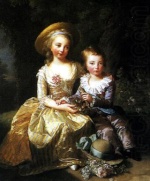
Nombre de messages : 31526
Age : 42
Localisation : Lyon
Date d'inscription : 22/05/2007
 |  Sujet: Re: The Devil Wears A White Dress: Antoinette et la chemise Sujet: Re: The Devil Wears A White Dress: Antoinette et la chemise  Mar 24 Juin - 14:13 Mar 24 Juin - 14:13 | |
| Ouais je suis pas fan non plus, ça fait un peu négligé 
_________________
Le capitalisme c'est l'exploitation de l'homme par l'homme. Le syndicalisme c'est le contraire!
|
|   | | le beau lauzun
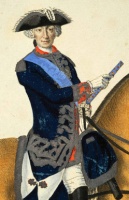
Nombre de messages : 831
Date d'inscription : 04/09/2014
 |  Sujet: Re: The Devil Wears A White Dress: Antoinette et la chemise Sujet: Re: The Devil Wears A White Dress: Antoinette et la chemise  Mar 30 Sep - 14:35 Mar 30 Sep - 14:35 | |
| Très importante invention dans l'Histoire du Costume, le coton.  The Big Question The Big Question
What is the most significant fashion innovation in history?  Although Marie Antoinette is remembered as a free-spending fashionista, her most controversial fashion statement was a simple cotton gown. Before cotton became widely available in the Western world in the late 1700s, the high cost of silk and wool made new clothing prohibitively expensive for commoners. Cotton gave the masses access to fashion—but it also brought imperialism, a booming slave trade, and untold environmental damage. (Kimberly Chrisman-Campbell, author, Fashion Victims: Dress at the Court of Louis XVI and Marie-Antoinette) |
|   | | decadenzia

Nombre de messages : 347
Date d'inscription : 30/11/2015
 | |   | | madame antoine

Nombre de messages : 6902
Date d'inscription : 30/03/2014
 |  Sujet: Re: The Devil Wears A White Dress: Antoinette et la chemise Sujet: Re: The Devil Wears A White Dress: Antoinette et la chemise  Lun 9 Jan - 12:59 Lun 9 Jan - 12:59 | |
|
_________________
Plus rien ne peut plus me faire de mal à présent (Marie-Antoinette)
|
|   | | Little Po

Nombre de messages : 119
Date d'inscription : 15/04/2015
 |  Sujet: Re: The Devil Wears A White Dress: Antoinette et la chemise Sujet: Re: The Devil Wears A White Dress: Antoinette et la chemise  Ven 16 Fév - 5:23 Ven 16 Fév - 5:23 | |
| More about these en gaulle dresses at https://www.racked.com/2018/1/10/16854076/marie-antoinette-dress-slave-trade-chemise-a-la-reine I'll copy-paste this for you.   The Marie Antoinette Dress That Ignited the Slave TradeUnlike her usual ornate style, it was relatively simple — but still scandalous. The Marie Antoinette Dress That Ignited the Slave TradeUnlike her usual ornate style, it was relatively simple — but still scandalous.By Caroline London Jan 10, 2018, 9:32am EST  Marie Antoinette en chemise, 1783 portrait by Louise Élisabeth Vigée Le Brun. Photo: Wikipedia/Public Domain Marie Antoinette en chemise, 1783 portrait by Louise Élisabeth Vigée Le Brun. Photo: Wikipedia/Public Domain Marie Antoinette is infamous for her lavish, over-the-top fashions. It is the first thing most people associate with the doomed queen — skirts as wide as they are tall paired with towering hairstyles, all draped in jewels and pearls. She was a fashion icon; if Marie wore a style, the rest of the court — and the Western world — followed suit. She had the power to make or break an entire industry just by deeming something fashionable, and though it wasn’t her intention, that is exactly what she did. Yet despite all of Marie Antoinette’s extravagant fashions, it was her most unassuming look that changed the world forever. In 1783, portrait artist Élisabeth Louise Vigée Le Brun painted Marie Antoinette in a simple cotton gown known as a robe de gaulle. The thin white fabric is airy and loose, cinched at the waist with a sheer golden sash. Full sleeves and a softly ruffled neckline add volume to the otherwise unstructured shape. She doesn’t wear any jewels or embellishments, just a wide-brimmed straw hat tied with a ribbon band, topped with a few relatively modest plumes. The painting has a graceful and arcadian feel to it, at least to the modern eye. The scene is refreshingly natural when compared to the ornateness of the typical Rococo-era portrait. The gown gives off “an aesthetic of rustic simplicity,” writes Katy Werlin in Clothing and Fashion: American Fashion From Head to Toe. Despite its humble appearance, though, Marie Antoinette’s portrait in the plain cotton dress had an impact that reverberated through the world in ways no one could have foreseen. It flipped the textile industry on its head, lighting the fuse laid out by a fast-changing world of exploration, Enlightenment, and rebellion. It caused cotton, and the institution of slavery it stood on, to explode. When Marie Antoinette was sent to France to marry the dauphin at just 15 years old, she entered a world of extraordinary opulence. Versailles was home to the most lavish halls and grounds imaginable, and the people who occupied it dressed to match. Marie Antoinette dressed as she was expected to, in the finest French silks with jewels fit for a future queen. She was not the first to wear the over-the-top styles; she was simply in a position to take them to levels with which even the most privileged members of the aristocracy could not compete. When Marie’s husband, Louis XVI, ascended to the throne in 1774, he gifted Marie with the Petit Trianon, an idyllic chateau on the grounds of Versailles first occupied by Louis XV’s mistress, Madame du Barry. The Petit Trianon was Marie’s personal escape. She was given complete control of the estate; even the king could not enter if she did not invite him. Marie and her ladies would go there to step away from their lavish lifestyles and enjoy a simpler existence, undisturbed by the scrutiny and expectations of the court. Naturally, this extended to their clothing. They left their stiff silks behind in favor of light muslins and brightly patterned cotton chintz and indiennes. At this point in time, the vast majority of cotton came from India (hence “indiennes”), and thanks to the East India Company, it was spread across Europe. Native Americans grew cotton in what would become the Southern United States for centuries, and as the colonists took over the New World, they too grew small amounts of cotton, but very little was exported. Much of the American agricultural industry in its infancy was supported by indentured servants. While slavery certainly existed in the United States at the time of Marie Antoinette, its future was uncertain. Shortly after the American Revolution, the Northern states outlawed slavery one by one, and for a brief time, it looked as though the Southern states might do the same. That all changed as cotton began to rise. It is not surprising that Marie Antoinette would choose to be painted in the fashion she wore in her private oasis. She was by no means the first to be depicted wearing the provincial cotton dress that typified life at the Petit Trianon. Within the French court alone, Vigée Le Brun painted a few aristocratic ladies in the gauzy gowns, including Madame du Barry in 1781 and the Duchess de Polignac, one of Marie Antoinette’s closest friends, in 1782 and 1783. These women were both already controversial figures to the people of France, and while their choice of cotton gowns stirred up some level of dissent, it was nothing compared to the uproar that exploded when Marie’s cotton-gown portrait was put on exhibition at the Salon of the Académie Royale.  Another Vigée-Lebrun painting of Marie Antoinette. Photo: Wikipedia/public domain Another Vigée-Lebrun painting of Marie Antoinette. Photo: Wikipedia/public domain The backlash was immediate. Salon visitors demanded the portrait be removed from public view, but the damage was already done. As Mary D. Sheriff states in The Exceptional Woman: Elizabeth Vigée-Lebrun and the Cultural Politics of Art, “Vigée-Lebrun unwittingly showed her [Antoinette] as an immodest woman, providing enemies with yet more evidence against the queen.” There were many who saw the garment as alarmingly scandalous. It closely resembled a chemise — the simple dress that served as a base garment for women at the time. In other words, the queen appeared to be posing in her underwear. This accusation gave the cotton gown the name by which it is now most commonly known: the “chemise à la reine,” or the “chemise of the queen.” Beyond the shocking nature of the gown’s design, the fabric itself was a source of major uproar. Many of her fellow aristocrats saw the queen in such an inexpensive textile as a breakdown of the barriers between the classes. More importantly, though, cotton was seen by the French as a very English fabric, since India was a British colony. Cotton chintz had risen in popularity throughout the century in Britain, and was a fashionable choice on that side of the Channel by the 1780s. Therefore, it was perceived as incredibly unpatriotic for the French queen to so openly wear cotton. Her loyalties were already under question due to her Austrian heritage, and this dress only confirmed her lack of French allegiance. The queen’s many critics were concerned that this choice would destroy the French silk industry. Despite the controversy, the 18th-century fashionistas who were unafraid to take risks expanded the popularity of the chemise à la reine. In The Art Of Dress: Fashion in England and France 1780-1820, Aileen Ribeiro recounts how Marie Antoinette sent chemise gowns to a few of her friends, including the famous British style icon, Georgiana, the Duchess of Devonshire (yes, the Keira Knightley one). Soon, what was once seen as scandalous was now seen as stylish, and chemises à la reine became a popular choice of dress for women across Europe. Paired with the rising affinity for Greek and Roman culture brought on by the Enlightenment, the plain white dress quickly took over the fashion world. As everyone knows, Marie Antoinette was executed 1793 for reasons that went far beyond her contentious dress. Though the queen was gone, the impact of her sartorial choice was just starting to make its mark. The people of France had been right to be concerned about the popularization of cotton and other muslins. Throughout the next two decades, the French silk industry suffered greatly. While the French Revolution had a massive impact on the economy across the board, the demand for silk both in France and abroad came crashing down as the simple white muslin dress became the leading style. However, as the Revolution progressed, the general French perception of the patriotism associated with cotton completely reversed. As Caroline Weber writes in her book Queen of Fashion: What Marie Antoinette Wore to the Revolution, “Once condemned as ruinous to the domestic silk industry, muslin could now be worn as a sign of patriotic ardor, along with even cheaper stuffs like cotton and wool, since the nobility’s costumes at the Estates General had marked ‘sumptuous silks and velvets as enemies of the Revolution.’” By the end of the century, cotton and muslin had nearly completely replaced silk as the fashionable fabrics of choice. Yet the fall of silk and rise of cotton had implications that reached much further than the borders of France. The Indian cotton industry could no longer keep up with demand, so Europeans were forced to look elsewhere for their supply. Up until the end of the 18th century, tobacco, rice, and other food products dominated the American agricultural industry. That all changed when the demand for cotton suddenly skyrocketed.  Marie Antoinette, Queen of France, en grand habit de cour (by Jean-Baptiste Gautier Dagoty, 1775) Photo: Wikipedia/public domain Marie Antoinette, Queen of France, en grand habit de cour (by Jean-Baptiste Gautier Dagoty, 1775) Photo: Wikipedia/public domain While the simple cotton dress was rising in popularity, the Industrial Revolution was making major strides to aid in textile production. When Eli Whitney invented the cotton gin in 1794, suddenly there was the technical ability to process cotton at a rate to keep up with demand. All that was necessary was the workforce to pick large volumes of cotton so it could be processed by the gin. Of course, plantation owners looked to the cheapest possible option. The boom in the agricultural industry caused a boom in slavery to support it. According to American Slavery: 1619-1877 by Peter Kolchin, “annual cotton production rose from about 3,000 bales in 1790 to 178,000 in 1810, then surged more than twentyfold during the next half century.” The slave population increased in turn, from about 654,000 slaves in the South in 1790 to over 1.1 million in 1810, a number that continued to grow in the following decades. Marie Antoinette and her fellow fashion trendsetters made cotton desirable. Technology and slave labor made it affordable. It was the perfect storm. The affordability increased the desirability, resulting in an even higher demand, which in turn increased the mass production so that the price dropped even further. The cycle caused “King Cotton” and the institution of slavery which it stood upon to rule the South. Of course, we all know what happened from there. A simple dress launched an elaborate butterfly effect with far-reaching consequences that the young French queen never could have predicted when she took a step outside her lavish royal wardrobe. Well it's all about this little white dress ! 
_________________
Avec elle je ne suis plus la reine, je suis moi
|
|   | | Chakton

Nombre de messages : 1263
Date d'inscription : 22/10/2017
 |  Sujet: Re: The Devil Wears A White Dress: Antoinette et la chemise Sujet: Re: The Devil Wears A White Dress: Antoinette et la chemise  Mer 20 Juin - 8:50 Mer 20 Juin - 8:50 | |
| Das hier war etwas ganz und gar Unerhörtes: Marie-Antoinette im Unterhemd !   Angeblich wollte sich die französische Königin damit ganz demütig auf den Stand des einfachen Volkes begeben. Dumm nur, dass ihr das niemand abnehmen wollte. Im Gegenteil: Der bewusst inszenierte Bruch mit den höfischen Regeln stand für den Eigensinn einer Dame, die sich offenbar alles herausnehmen durfte.  Dass in der Malerin Elisabeth Louise Vigée-Lebrun auch noch eine von der Königin protegierte Bürgerliche zum Pinsel greifen durfte, machte die Sache auch nicht besser. Nur wenig später sah sich Marie-Antoinette genötigt, sich noch einmal abbilden zu lassen – dieses Mal aber in züchtiger Hofkleidung. https://www.suedkurier.de/ Je sais, on connaît, mais c'est cool de l'avoir en allemand aussi. 
_________________
X est la force deux fois pure
|
|   | | Airin
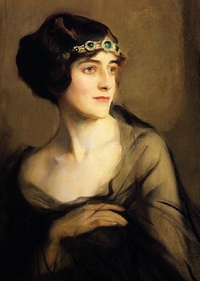
Nombre de messages : 1005
Date d'inscription : 19/09/2015
 |  Sujet: Re: The Devil Wears A White Dress: Antoinette et la chemise Sujet: Re: The Devil Wears A White Dress: Antoinette et la chemise  Mer 20 Juin - 10:07 Mer 20 Juin - 10:07 | |
| Ironie de l'histoire, c'est le tableau fait en vitesse pour réparer les dégâts qui est devenu le portrait le plus célèbre de Marie-Antoinette.  |
|   | | Rose Rose
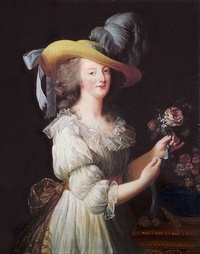
Nombre de messages : 96
Date d'inscription : 31/08/2017
 |  Sujet: Re: The Devil Wears A White Dress: Antoinette et la chemise Sujet: Re: The Devil Wears A White Dress: Antoinette et la chemise  Sam 30 Mai - 9:25 Sam 30 Mai - 9:25 | |
| Bonjour à tou.te.s. J'ai lu dans Marie-Antoinette L'affranchie de Sylvie Le Bras-Chauvot que c'est Rose Bertin qui a créé la Robe Chemise alors je suis un peu confuse parce que je croyais que la mode venait d'Angleterre
_________________
Je me réveille à peine. Je suis encore toute décoiffée.
|
|   | | Dame d'atours

Nombre de messages : 54
Date d'inscription : 03/04/2020
 |  Sujet: Re: The Devil Wears A White Dress: Antoinette et la chemise Sujet: Re: The Devil Wears A White Dress: Antoinette et la chemise  Sam 30 Mai - 11:22 Sam 30 Mai - 11:22 | |
| Bonjour Rose Rose,
Relisez le chapitre, et vous verrez que, si l'influence anglaise est bien présente, la robe en chemise « À la reine » est bien une création de Melle Bertin pour, et probablement avec, Marie-Antoinette.
Deux britanniques l'ont portées les premières, dont la duchesse de Devonshire, qui reçut la sienne de la reine de France en personne.
Belle journée à vous. |
|   | | globule
Administrateur
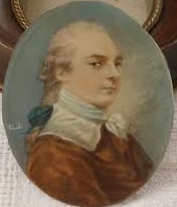
Nombre de messages : 2236
Date d'inscription : 04/10/2017
 |  Sujet: Re: The Devil Wears A White Dress: Antoinette et la chemise Sujet: Re: The Devil Wears A White Dress: Antoinette et la chemise  Dim 31 Mai - 8:51 Dim 31 Mai - 8:51 | |
|
_________________
- Je ne vous jette pas la pierre, Pierre -
|
|   | | Dame d'atours

Nombre de messages : 54
Date d'inscription : 03/04/2020
 |  Sujet: Re: The Devil Wears A White Dress: Antoinette et la chemise Sujet: Re: The Devil Wears A White Dress: Antoinette et la chemise  Mar 2 Juin - 8:31 Mar 2 Juin - 8:31 | |
| |
|   | | Greta de Fleurville
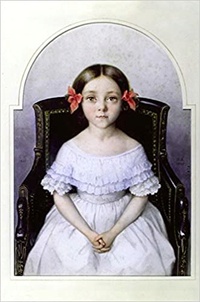
Nombre de messages : 47
Date d'inscription : 25/08/2020
 |  Sujet: Re: The Devil Wears A White Dress: Antoinette et la chemise Sujet: Re: The Devil Wears A White Dress: Antoinette et la chemise  Ven 4 Sep - 8:39 Ven 4 Sep - 8:39 | |
| Il y eut à Ham House une exposition de costumes issus de tableaux. Et notamment la fameuse robe-chemise de Marie-Antoinette.   Pour voir d'autres portraits : http://vintage-frills.com/2018/03/15/stitch-time-ham-house/
_________________
Un murmure peut être plus puissant qu'un cri.
|
|   | | Colibri

Nombre de messages : 183
Date d'inscription : 03/12/2017
 |  Sujet: Re: The Devil Wears A White Dress: Antoinette et la chemise Sujet: Re: The Devil Wears A White Dress: Antoinette et la chemise  Mer 9 Sep - 2:27 Mer 9 Sep - 2:27 | |
| Très bien fait 
_________________
cui cui cui
|
|   | | decadenzia

Nombre de messages : 347
Date d'inscription : 30/11/2015
 | |   | | Dame d'atours

Nombre de messages : 54
Date d'inscription : 03/04/2020
 |  Sujet: Re: The Devil Wears A White Dress: Antoinette et la chemise Sujet: Re: The Devil Wears A White Dress: Antoinette et la chemise  Mer 7 Oct - 12:54 Mer 7 Oct - 12:54 | |
| Ce modèle est vraiment joliment réalisé, à l’exception du tissu qui semble nettement moins aérien qu’à l’époque. La robe de Marie-Antoinette était en mousseline, un voile de coton britannique extrêmement fin et d’aspect mousseux, d’où son nom.
Aussi libératrice que seyante de « 7 à 77 ans », la robe en chemise « à la reine » connu un succès phénoménal en France comme partout en Europe. Pour palier au coût élevé de la mousseline anglaise, on la confectionnait également en linon, un voile de lin moins élaboré mais plus abordable car produit sur le continent. Elle était déclinée sur un fond pastel visible en transparence.
Son absence de contrainte corporelle comme sa coupe tout d'une pièce influencèrent les habillements féminins jusqu’à la période révolutionnaire. Elle trouva son continuum sous l’Empire. |
|   | | spa monopole

Nombre de messages : 322
Date d'inscription : 31/01/2017
 | |   | | Little Po

Nombre de messages : 119
Date d'inscription : 15/04/2015
 |  Sujet: Re: The Devil Wears A White Dress: Antoinette et la chemise Sujet: Re: The Devil Wears A White Dress: Antoinette et la chemise  Lun 12 Avr - 11:24 Lun 12 Avr - 11:24 | |
| Look at this, we are a reference now.  https://sydneylokant.weebly.com/blog/dressing-scandalously-in-the-18th-century-a-look-at-the-chemise-de-la-reine 
_________________
Avec elle je ne suis plus la reine, je suis moi
|
|   | | Sublime&Silence
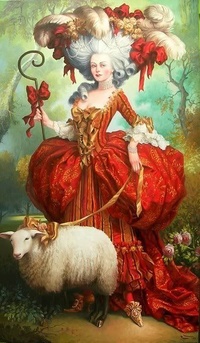
Nombre de messages : 207
Date d'inscription : 31/08/2017
 |  Sujet: Re: The Devil Wears A White Dress: Antoinette et la chemise Sujet: Re: The Devil Wears A White Dress: Antoinette et la chemise  Jeu 15 Avr - 10:59 Jeu 15 Avr - 10:59 | |
| - Dame d'atours a écrit:
- Ce modèle est vraiment joliment réalisé, à l’exception du tissu qui semble nettement moins aérien qu’à l’époque. La robe de Marie-Antoinette était en mousseline, un voile de coton britannique extrêmement fin et d’aspect mousseux, d’où son nom.
Je suis d'accord avec vous Dame d'atours. Sur la photo le tissu a l'air tout raide.
_________________
Le vide aurait suffi
|
|   | | Contenu sponsorisé
 |  Sujet: Re: The Devil Wears A White Dress: Antoinette et la chemise Sujet: Re: The Devil Wears A White Dress: Antoinette et la chemise  | |
| |
|   | | | | The Devil Wears A White Dress: Antoinette et la chemise |  |
|
| | Permission de ce forum: | Vous ne pouvez pas répondre aux sujets dans ce forum
| |
| |
| |
